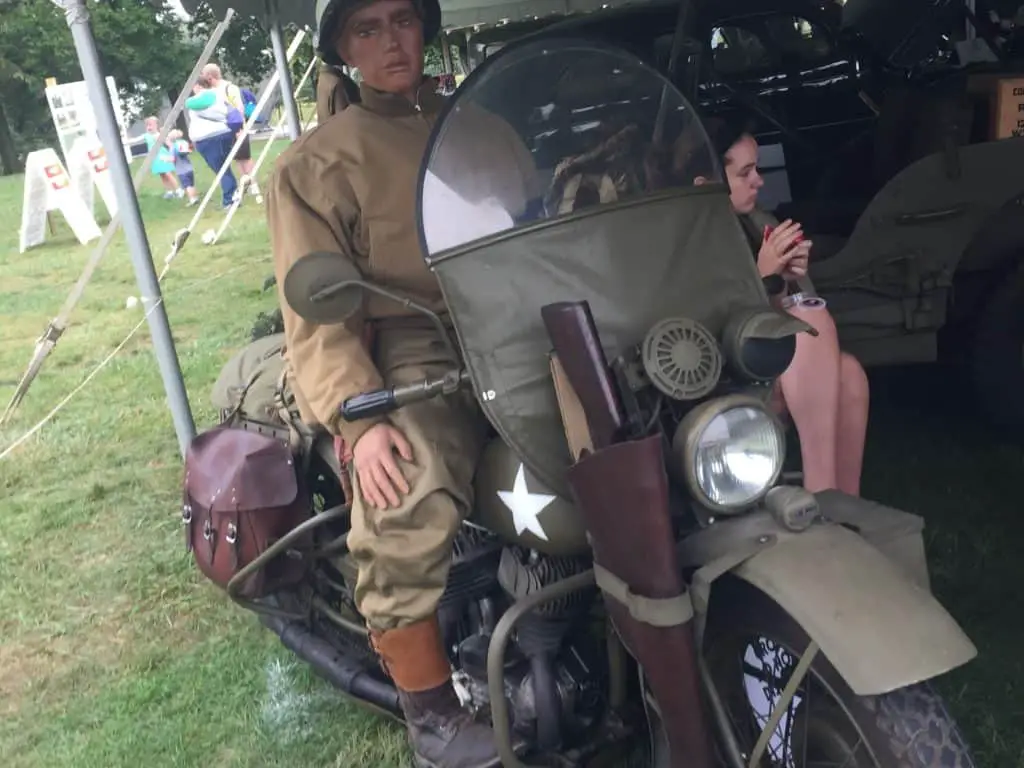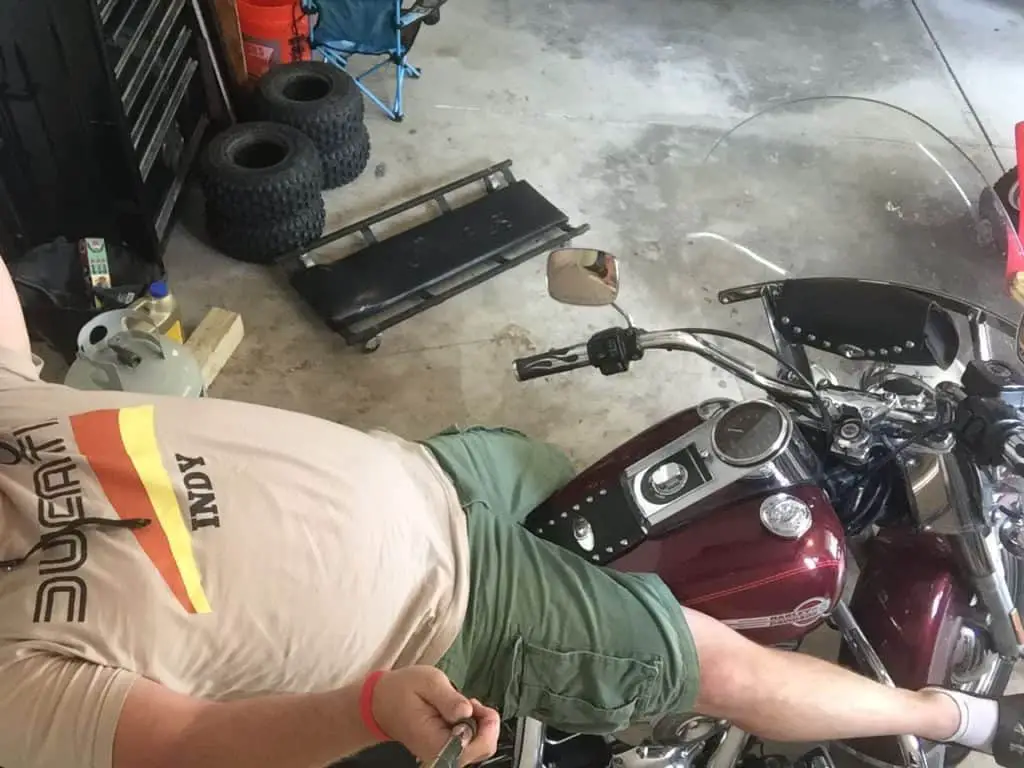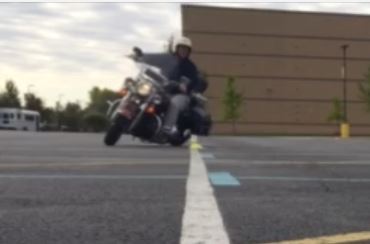
I was working on my daugther’s ATV and wondered if she would eventually ride an enduro, adventure, or dual sport motorcycle when she gets older. I then wondered about the differences between each of the styles of motorcycles myself.
What are the differences between an enduro, adventure, and dual sport motorcycle? Here is a table showing the differences on a high level.
| Criteria | Adventure | Dual Sport | Enduro |
| Weight | Heaviest | Middle | Lightest |
| Street Legal | Yes | Yes | Generally No |
| Dirt Riding | Light Dirt Riding | Yes | Yes |
| Best Riding Style | Longer Trips | Trail & Street | Trail Riding |
| Engine Size | Biggest | Middle | Smallest |
You can see from the table manufactures design the differences to favor specific preferences. By breaking each one down, you will use the information more effectively.
Here is another table breaking things down even more if you need the quick view of things. A detailed write up will follow the bigger table.
| Characteristic | Adventure | Dual Sport | Enduro |
| Weight | Heaviest | Middle | Lightest |
| Engine Displacement | Greater than 650cc | 200 cc to 650 cc | 150 cc to 400 cc |
| 2 vs 4-Stroke Engine | 4-Stroke | Mostly 4-Stroke | Both |
| Transmission | Higher Gear Ratio | Middle to Lower Gear Ratio | Lower Gear Ratio |
| Street Legal | Yes | Yes | No |
| Dirt Riding | Light Dirt Riding | Yes | Yes |
| Highway Riding | Yes | Yes | No |
| Tires | Emphasis for Street | Street and Dirt | Dirt |
| Gas Tank Capacity | Largest | Small to Medium | Small |
| Riding Distance | > 200 miles easily | 200 miles or less | Short-Moderate Trails |
| Luggage | Yes | Sometimes | No |
| Ground Clearance | Lowest | Moderate | Highest |
Weight Differences Between Adventure, Dual Sport, And Enduro Motorcycle
If you like and are interested in getting a bike to do more exploring off-road, then each style of of bike has some appeal to you. You know there is a weight difference, but do not realize how much the difference is until you work with these motorcycles.
In fact, I just saw an awesome video on YouTube that goes through a rating system to rank many of the popular dual sport and adventure bikes. Look to pause the video for the difference in weight.
Pay attention to the GS 850, GS 1250, Yamaha Tenere, and Honda Africa Twin. These are truly adventure bikes. You will see they are heavy at the high 400s and 500+ pounds.
Now look at the KTM EXC, Husqvarna, DRZ, and KLR. These are true dual sports. The bikes come in the high 200 and 300 pound ranges.
Enduros come in around the 220 to 275 pound range.
The doublibg of weight from the enduro to the adventure bikes have profound effects on performance, unless your are Mad Mick.
The heavy weight makes technical and tight single track riding tough. On the other end, light dual sport or street legal enduros get blown all over the place while riding on the highway.
Engine Displacement between ADV, Dual Sport, & Enduro: Big, Medium, Little
Big bikes need big engines, little bikes can use little engines. Seems simple enough.
Just like car manufactures, there are little things that can add or take away depending on the engine and how they made it. Check out this article I wrote about the different engines in motorcycles.
The adventure bike will have an engine larger than 650 ccs. The larger engine is the biggest reason it weighs more. You can see adventure bikes with more than 1250ccs. I just sat on a BMW GS 1250. Boy, it was huge!
A dual sport will have an engine between 250 and 650 ccs. The dual sport covers a wider range of intended riding conditions which is why a bigger range in ccs exists. Yamaha intends the smaller TT 250 to spend more time on the trails with maybe a few miles in between on the street. Then you have the KLR which will see more street miles than dirt, but still capable.
Enduro motorcycles spend their time in the woods. So they need to be quick, agile, and “flickable.” There are many enduro riders who spend time in the desert. I cannot really comment on this riding since I have no experience here.
The difference in weight affects maneuverability. The larger engines create more gyroscopic force than smaller engines. The force helps keep the motorcycle upright. Naturally, this makes large engines hard to maneuver. Well, the added weight does not help.
The extra mass is nice on the streets though as you do not get blown around as much.
2-Stroke and 4-Stroke Engine In Adv, Dual Sport, and Enduro Motorcycles
I find this topic interesting as it crosses a few decades. Back in the day you had dual sport motorcycles and enduro motorcycles. Adventure bikes did not exist in the way we know them today.
People still completed adventure rides, just not on adventure bikes. The displacement was smaller and the design of the bike was different.
Back then, the 2-stroke played a larger role with motorcycling. It was not uncommon to have a smoker (2-stroke) in a street bike. You will not see it today, the two stroke is a dinosaur in dual sports and street bikes.

Today, the four stroke dominates the dual sport and adventure motorcycles. You should want it that way. Imagine how much of a pain it would be to mixing and carrying the pre-mix oil.
Enduros are a different story. The 4-stroke started putting the 2-stroke out to pasture in the early 2000s. Recently the 2-stroke is making a comeback.
It makes sense, the two strokes have more power per cc, and the engine is lighter than a 4-stroke. Remember, enduros need to be light and maneuverable.
Adventure, Dual Sport, And Enduro Motorcycle Transmissions
While all the motorcycles can go off-road the contrasts in the primary riding environments drive big differences in their transmission.
Specifically, the more street oriented adventure bikes receive gearing for street riding while the enduro keeps its gear ratios designed for the woods.
What does this mean?
There is what we call high or low gearing. When a gear ratio is low, the engine will turn over more times for every one revolution of the tire. The basics of physics are being applied.
When the gear ratio is high, the engine will turn over fewer revolutions for every turn of the tire.
Riding An Adventure, Dual Sport, or Enduro On The Street
Most of the information you read about these styles of bikes involves a focus on taking them off-road. The emphasis for on-road riding seems to be more about getting to the next off-road riding area.
The one exception to this point is the adventure bike. You may have picked up from the chart above and what we have covered so far in this article, the ADV bike spends most of its time on the road with an occasional off-road trip. Some ADV riders spend most of their time off-road and use the pavement to get to the next adventure ride.
The heavy nature makes the bike more suitable for on-road and highway riding. The ergonomics
also make the ADV bike better for road riding. The suspension better absorbs the bumps of the road.
The dual sport motorcycle will get you from place to place on the road. The suspension will be harder making you feel more of the bumps in the road. A dual sport rider will not have as much wind protection as the ADV rider.
The enduro motorcycle is generally not street legal. That being said, there are many people who convert their 4-stroke enduro to a street legal bike. Here is an article where I discuss if a dirt bike can be ridden on the side of the road. In it, I also talk about the requirements to make a dirt bike street legal. This also applies to an enduro.
Note the short gear ratio will not make these ideal bikes to cover long distances on the road. If you ride short distances from one place to the other, a conversion might make sense. Here is a highly rated good conversion kit to get you started from RevZilla.
Riding Your Adventure, Dual Sport, Or Enduro Off-Road
I think we have covered everything about riding off-road for each of these bikes. Here is a table to give you a recap or summarize the information.
| Characteristic | Adventure | Dual Sport | Enduro |
| Flickability | Least | Middle | Most |
| Single Track Riding | Worst | Middle | Best |
| Suspension Travel | Least | Middle | Most |
| Work To Ride Off-Road | Most | Middle | Least |
| Best Off-Road Riding | Gravel & Fire Roads | Fire Roads to Single Track | Single Track |
Riding An Adventure, Dual Sport, and Enduro On The Highway
For highway riding, you want a bike that feels planted. Have you ever ridden down the highway and felt like you would get blown off the roadway onto the shoulder? Scary huh?
While I am not an expert on what makes a bike “planted,” I can tell you two things I know that work.
First, when the weight of the bike is high, you are not going to be affected by the wind and buffeting coming off the semis while on the highway. I am not talking about making the bike heavier by putting your gear on it; I am talking about the dry weight of the bike.

Second, when you take advantage of aerodynamics, the bike cuts through the wind versus plowing through it. I recently reminded myself of this on a recent ride without the windscreen.
It felt like I needed to white knuckle the handlebars to do 65 mph.
Both factors are things you find on the heavier adventure bikes. Riders can help the aerodynamics by putting wind screens on the bike, but not all of them have this option.
Usually on the bigger KLR and DR dual sports, you can find wind screens. Look at these highly rated options for the KLR from Revzilla. Here are a few options for the Suzuki DR.
Highway Cruising At 80 MPH
Riding on the highway today simulates a kamikaze ride at moments. Bikes need stability at 70 mph.
Have you evey ridden a bike at 80 mph? How much work was it for the bike? Bikes that work hard to get to 80 mph, should not be ridden on the highway.
This again favors adventure bikes, but a few of the larger dual sport bikes can do it like the KLR and DR.
The problem with a struggling bike at 80 mph is the lack of passing when you’re running 70 mph.
Enduro riders will do 80 mph…With the bike on a trailer going down the highway.
Comfort After Many Hours In The Saddle
I will get straight to the point. Adventure motorcycles again win this category.

Dual Sport riders will need to work on improving ergonomics and the seat.
Enduro riders have the most comfort.. from the seat of the tow vehicle.
Tires For Adventure, Dual Sport, and Enduro Motorcycles
Tire selection depends a lot on the terrain you ride. With a goal of being on-road and off-road, you know there are interesting tread patterns.
The two different riding conditions almost pull tire design apart down the middle. Off-road riding needs a knobby style of tire for grip which wears out quickly on the road. Knobs also create lots of road noise and an undesirable vibration that you do not get with a street tire.
Street tires lack traction riding off-road making it hard to reach your destination. They design them to run at higher pressures than dirt tires. They are great for gripping the street and whisking away water in the rain.
Combining the goals of both riding styles means compromising between them. What are you willing to give up, more traction in the dirt, or the smoother quieter ride in the street?
Tires for Adventure and dual sport bikes will go from 90% street/10% off-road to 10% road/90% off-road. As the rider, you need to pick the right tire for your needs.
The adventure rider will probably pick something that is 50% or more favoring street riding. The dual sport rider will pick a tire favoring more dirt conditions.
The enduro rider will select the all dirt tire.
Gas Tank Capacity For Adv, Dual Sport, and Enduro Motorcycles
The bike designed to cover the most ground will have the larger tank. Advantage goes to the ADV bike.
The dual sport has the middle capacity tank followed by the enduro.
I should mention we are talking about the stock tanks. What you need to realize here, is riders will customize their bikes to suit their needs. Tanks are one of the first things I see changed on dual sport and enduro bikes, especially dual sport.
Filling up every 120 miles or fewer becomes annoying, so riders frequently put on bigger tanks for extended rides. By putting on a larger tank on the enduro, the rider goes further off-road.
RIDING DISTANCE
I think we covered this in the chart and other topics. Review the second table again if needed.
Carrying Luggage On Adventure, Dual Sport, and Endure Motorcycles
Bigger bikes carry more weight. The ADV bike acts like a pack mule. The mounting systems are amazing. People carry large amounts of things for multiple week trips. I have even seen a trip where a camp shower was taken.

The biggest choice for the ADV rider is hard or soft panniers and what to take on the trip.
Dual sport bikes can have impressive luggage systems depending on the model. The bigger bikes will carry more, but you can take a large amount of gear on most. What I find interesting about the dual sport is the location of some luggage carriers like on the front fender.
Enduros will carry very little. Most of the time it is the toolkit. The rider may have a backpack on to bring along other small items.
Ground Clearance for Adv, Dual Sport, and Enduro Motorcycles
The more extreme the off-road riding, the more ground clearance you will need. Jumping on or over stumps, logs, and rocks works a suspension and requires ground clearance.
These are all activities of the enduro rider. These bikes have the highest level of ground clearance.
Dual sports will have a slightly lower ground clearance and will not do the stump jumping of the enduro.
They do not design adventure bikes to traverse large obstacles and thus do not require as much ground clearance. It is one of the main reasons these bikes do not go as far off-road.
Note On Enduro Motorcycles
You probably noticed in this article I did not talk about enduros being a motocross motorcycle. This is because they are not the same thing. Many articles on the internet will tell you enduros and sometimes dual sports are motocross bikes.
This is just not the case. Motocross bikes are dirt biked just like enduros are a form of a dirt bike, but the two have different riding styles.
